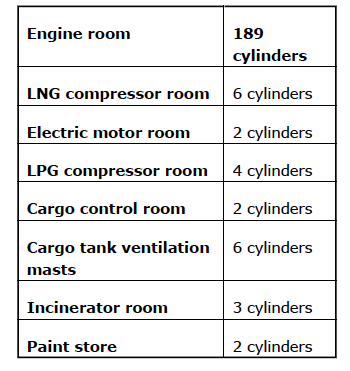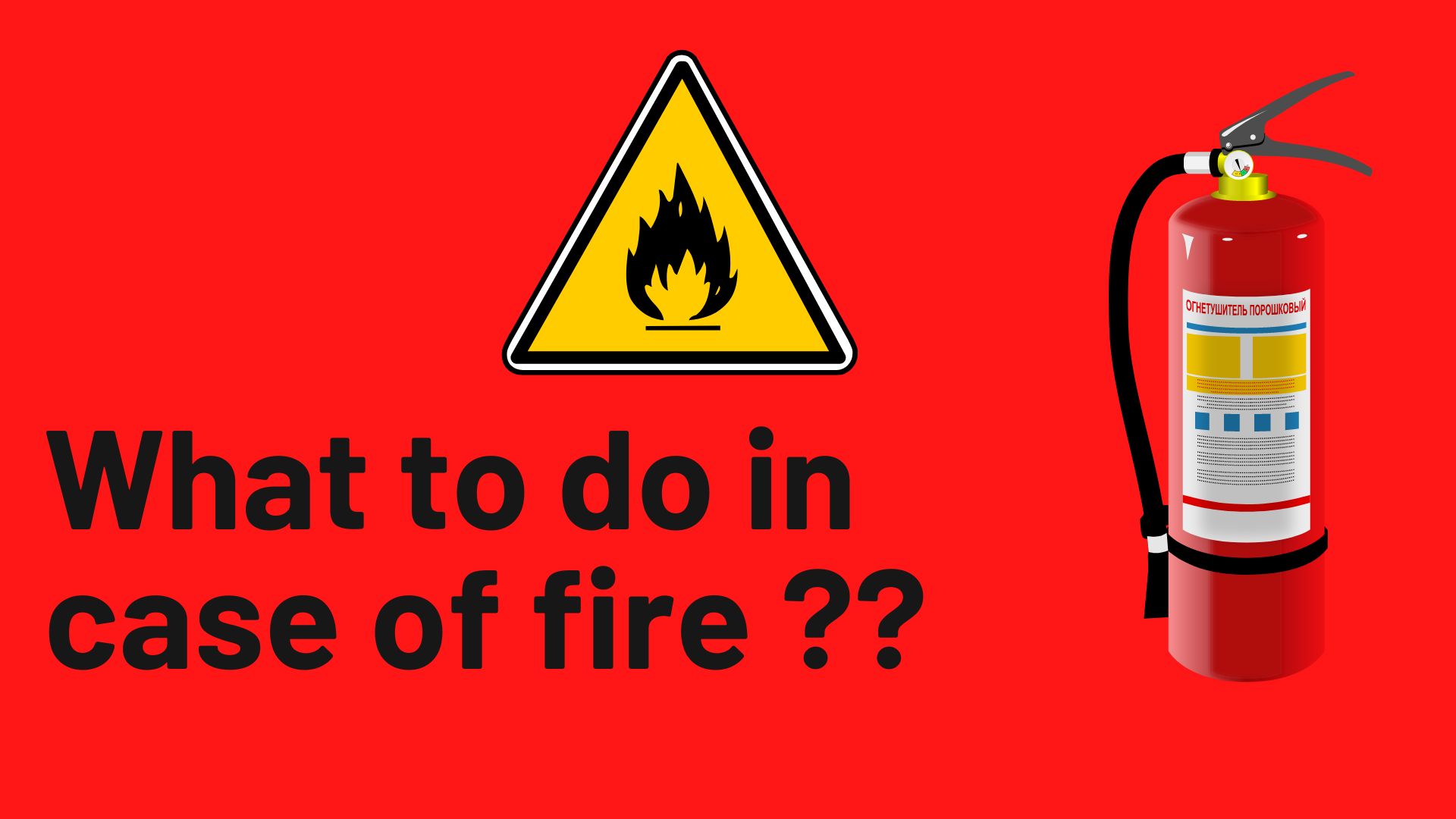Inert gas or CO2 is a non-reactive gas under particular conditions used on gas carriers and in terminals to prevent explosions:
- Inter-barrier spaces
- Cargo spaces
- Ships’ holds
- Onshore plant areas in which flammable gas may be detected
In this article, we will tell how to release CO2 in different places on board in case of fire in order to safeguard the ship.
NOTE:- Release of CO2 into any space must only be considered when all other options have failed and then only on the direct instructions of the Master.
The central CO2 flooding system in GAS TANKERS covers the engine room, LNG compressor room, electric motor room, LPG compressor room, cargo control room, cargo tank ventilation masts, incinerator room and paint store. The central system cylinders are situated in the room, located extreme aft on the main deck and the two starter cylinders are situated in the deck workshop on the starboard side of the main deck.
The paint store is covered by two cylinders situated in a locker on the main deck on the port side below the paint store.
The allocation of cylinders is as follows:

Table of Contents
ToggleWhat to do in case of fire in the Engine Room
- Stop any machinery within the engine room, check that all doors, hatches and fire flaps are shut and that all ventilation is stopped. However, this should not delay the release of CO2.
- Ensure all personnel have evacuated the engine room and have been accounted for.
- Go to the emergency headquarters on the starboard side of the main deck. Unlock the control cabinet for the engine room area and open the door.
- The alarm sirens will activate due to the door releasing the spring operated valve which directs compressed air from the engine room to the piston operated trip switch, situated on the inboard bulkead of the fire headquarters.
- Pull all the valve levers outwards.
- Pull the wire release handle to activate the starter cylinders
What to do in case of fire in the Paint Store
- Close the paint store door and the ventilation flap, in order to isolate the fire.
- Go to the control cabinet on the starboard side of the central CO2 flooding system room on the main deck aft. Unlock the control cabinet for the paint store and open the door.
- Pull the handle to activate the two cylinders in the locker on the main deck on the port side below the paint store.
- Ensure that all reasonable precautions are taken, such as the cooling of the boundary and/or any hot spots which may be found
What to do in case of fire in the Incinerator Room
- Close the incinerator room door and the ventilation flap, in order to isolate the fire.
- Isolate the incinerator by pressing the emergency stop pushbutton on the bulkhead, aft of the incinerator door and closing the gas oil tank outlet valve.
- Go to the control cabinet on the starboard side of the central CO2 flooding system room on the main deck aft. Unlock the control cabinet for the incinerator and open the door.
- Pull the handle to activate the three cylinders in the central CO2 flooding system.
- Proceed directly to the CO2 room to ensure that the correct number of cylinders have discharged for the particular area.
- Ensure that all reasonable precautions are taken, such as the cooling of the boundary and/or any hot spots which may be found.
What to do in case of fire in the Cargo Control Room
- Go to the emergency headquarters on the starboard side of the main deck. Unlock the control cabinet for the control room and open the door.
- The alarm sirens will activated due to the door releasing the spring operated valve which directs compressed air from the engine room to the control room alarm sirens.
- Proceed directly to the CO2 room and manually release the two cylinders marked CONTROL ROOM.
- Do not re-enter the control room for at least 24 hours and ensure that all reasonable precautions have been taken, such as maintaining boundary inspections, noting cooling down rates and/or any hot spots which may have been found.
- After this period, an assessment party using radio communication and wearing breathing apparatus and lifelines can enter the space quickly through a door, which is then shut behind them. Check that the fire is extinguished and that all surfaces have cooled prior to ventilating the control room.
Caution :-Premature opening could cause re-ignition if oxygen contacts hot combustible material.
